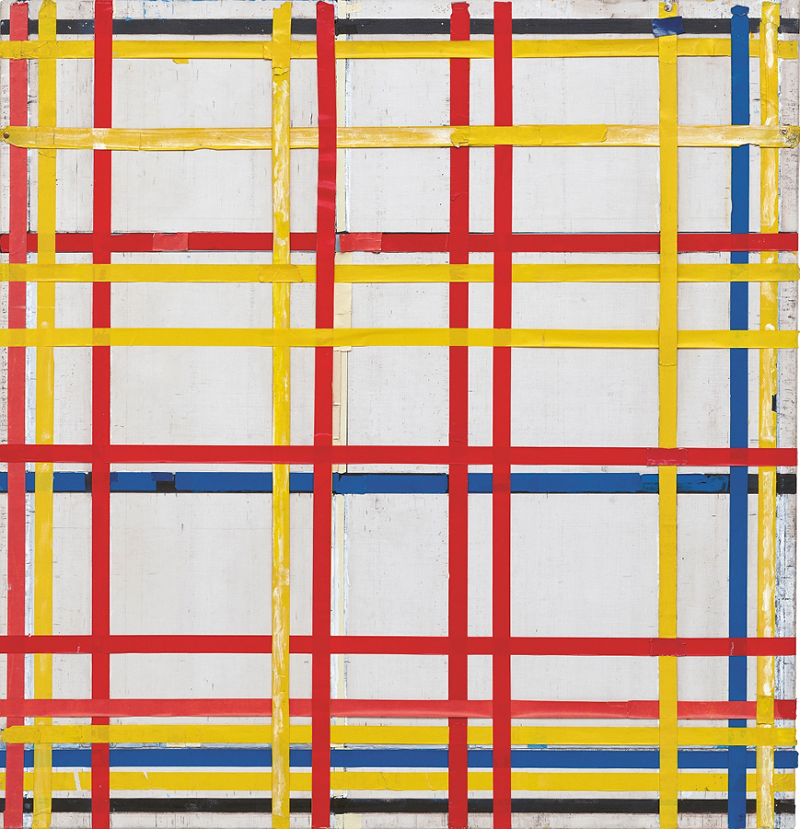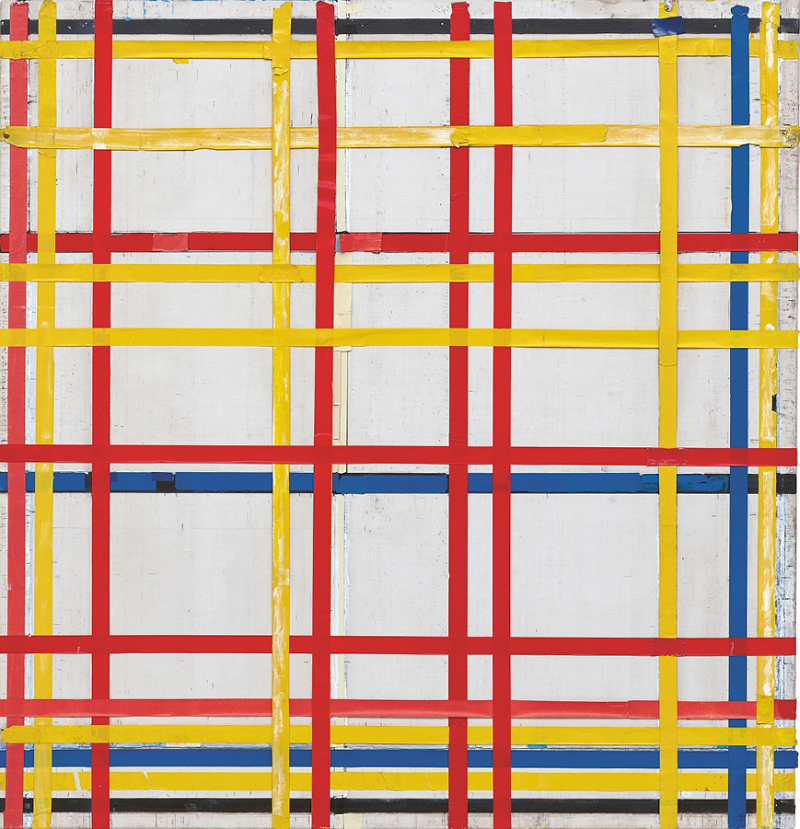
Recently, at a press conference to celebrate the opening of the Piet Mondrian exhibition ‘Mondrian.Evolution’ at the German Museum Kunstsammlung Nordrhein-Westfalen K20, curator Susanne Meyer-Büser announced that the highlight of the exhibition, the painting ‘New York City 1’ (1941), had been hanging upside down the whole time, that was exposed to the public.

The painting is a duct-taped version of a painting ‘New York City’, which is presented in Paris at the Centre Pompidou. The first clue that NYC 1 was hanging incorrectly came when a photograph from the artist's studio taken in 1944 was discovered. One may see that there is an easel with the tightly grouped yellow, blue and black stripes at the top. Shortly thereafter, the artist passed away.
“Could it be that the orientation shown in the photo is the actual one Mondrian had intended?” the curator asked. According to Meyer-Büser the picture was first shown at New York’s Museum of Modern Art in 1945. There, too, the thick grouping of stripes was shown at the bottom of the work instead of at the top. “Was it a coincidence, was it an oversight?” she said, adding that perhaps it was flipped over while being unpacked at MoMA over 75 years ago.
Meyer-Büser claims to have proof beyond the photograph taken in Mondrian's studio. She believes the artist would have worked from top to bottom, carefully layering the strips of tape over one another, weaving them together in a specific way, a feat that would be much more difficult if he worked from the bottom up.
Further, at what is currently the top of the picture, the tape is harshly torn and does not reach the edge of the canvas—another sign that Mondrian likely worked from top to bottom.
Regardless, the work will be displayed at Mondrian. Evolution, which chronicles Mondrian’s stylistic development, the way it has been since 1945, unclean ends up, thick grouping of horizontal tape at the bottom.
“If I turn the work around, I risk destroying it,” Meyer-Büser said, according to Monopol, and besides “maybe there is no right or wrong orientation at all?”
New York City 1 is not the only time that the MoMA supposedly displayed a work the wrong way. In 1961, during the museum’s exhibition of work by Henri Matisse, a stockbroker named Genevieve Habert noticed the paper cut La Bateau was hung upside down. Neither the museum staff, the 116,000 visitors, nor the artist’s son Pierre had realized the mistake.
After multiple visits, Habert bought a catalog and discovered she was right, only to be scoffed at by museum staff. She then approached the New York Times, which reported on the topsy-turvy cut out. Shortly after publication, MoMA curators took a second look and ultimately rehung the picture the correct way.
Source: ARTNews
About the artist:
Pieter Cornelis Mondriaan, after 1906 known as Piet Mondrian (7 March 1872 – 1 February 1944), was a Dutch painter and art theoretician who is regarded as one of the greatest artists of the 20th century. He is known for being one of the pioneers of 20th-century abstract art, as he changed his artistic direction from figurative painting to an increasingly abstract style, until he reached a point where his artistic vocabulary was reduced to simple geometric elements.
Mondrian's art was highly utopian and was concerned with a search for universal values and aesthetics. He proclaimed in 1914: "Art is higher than reality and has no direct relation to reality. To approach the spiritual in art, one will make as little use as possible of reality, because reality is opposed to the spiritual. We find ourselves in the presence of abstract art. Art should be above reality, otherwise it would have no value for man." His art, however, always remained rooted in nature.
He was a contributor to the De Stijl art movement and group, which he co-founded with Theo van Doesburg. He evolved a non-representational form which he termed Neoplasticism. This was the new 'pure plastic art' which he believed was necessary in order to create 'universal beauty'. To express this, Mondrian eventually decided to limit his formal vocabulary to the three primary colors (red, blue and yellow), the three primary values (black, white and gray) and the two primary directions (horizontal and vertical). Mondrian's arrival in Paris from the Netherlands in 1911 marked the beginning of a period of profound change. He encountered experiments in Cubism and with the intent of integrating himself within the Parisian avant-garde removed an 'a' from the Dutch spelling of his name (Mondriaan).
Mondrian's work had an enormous influence on 20th century art, influencing not only the course of abstract painting and numerous major styles and art movements (e.g. Color Field painting, Abstract Expressionism and Minimalism), but also fields outside the domain of painting, such as design, architecture and fashion. Design historian Stephen Bayley said: "Mondrian has come to mean Modernism. His name and his work sum up the High Modernist ideal. I don't like the word 'iconic', so let's say that he's become totemic – a totem for everything Modernism set out to be."
Source: Wikipedia
